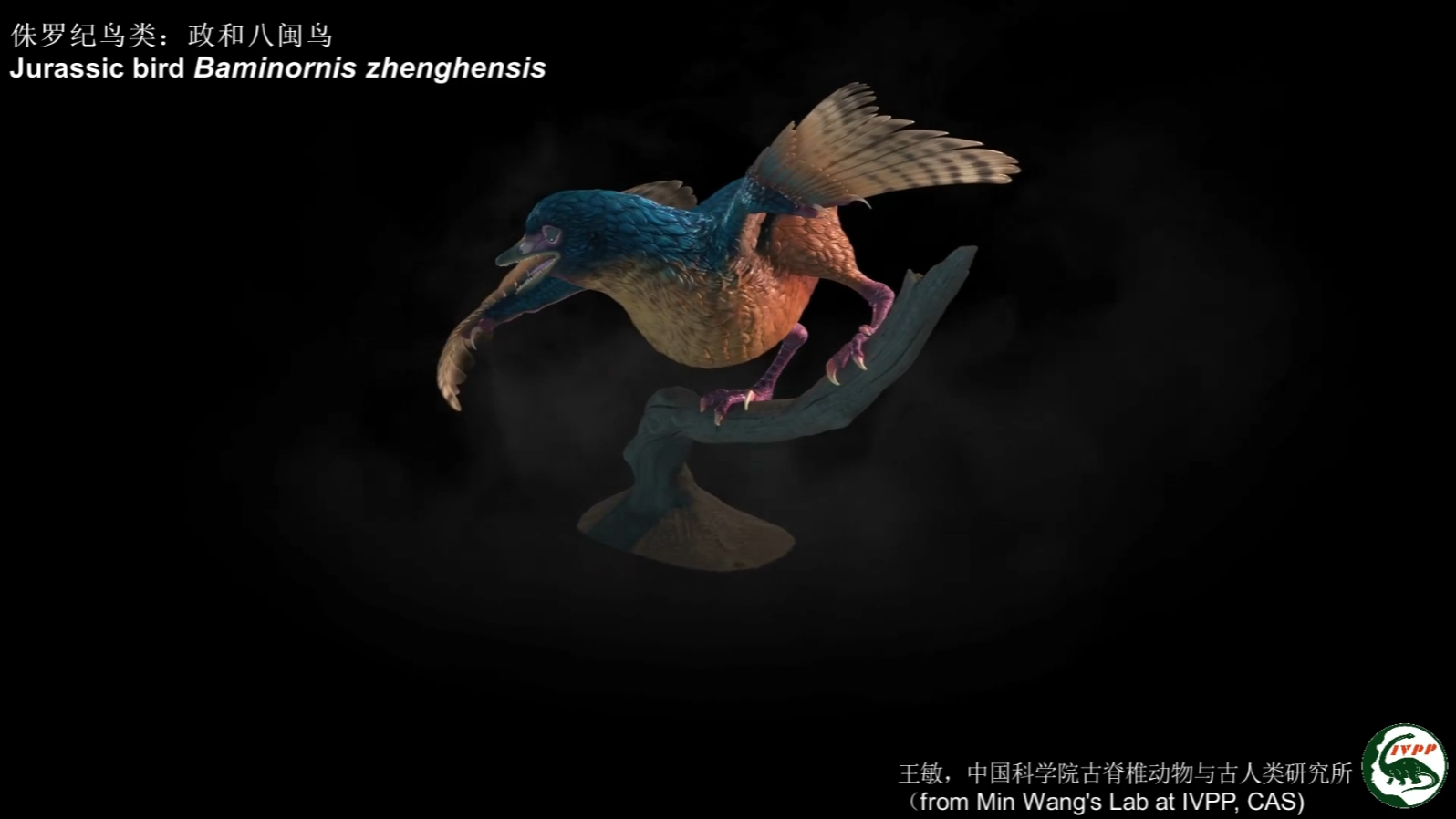

The world's first pair of cloned monkeys, "Zhong Zhong" (left) and "Hua Hua" (right). Photo provided by the Center for Excellence in Brain Science and Intelligence Technology, Chinese Academy of Sciences.
Editor's Note: This report is part of a popular science feature funded by the Shanghai Municipal Science and Technology Commission (Project No.: 22DZ2304300) in collaboration with The Paper and the journal World Science, which covers accomplishments recognized by national and municipal science and technology awards.
This piece focuses on the 2022 Shanghai Municipal Natural Science First Prize project, "Building Non-human Primate Model Animals." The research was conducted by researchers Sun Qiang, Liu Zhen, Qiu Zilong, and Zhang Hongjun at the Center for Excellence in Brain Science and Intelligence Technology, Chinese Academy of Sciences.
“Pull a single hair, and a million monkeys will blow out!” This ability of the Monkey King, Sun Wukong, in Journey to the West vividly illustrates what “cloning” means.
Cloning can be simply understood as “copying,” akin to making a photocopy of identical individuals or units.
This contrasts sharply with the concept of "Nine Sons of the Dragon"—cloning skips the sexual reproduction process and bypasses any potential combinations or mutations of genetic material that could occur.
At the end of 2017, a world-class achievement emerged: the first cloned monkeys from somatic cells were born in China. The related paper was subsequently published online on January 25, 2018, in the international academic journal Cell. This news sent shockwaves throughout the entire academic and research community.
Previously, after decades of efforts, scientists worldwide had not been able to conquer the challenges of somatic cell cloning in non-human primates.
Until Zhong Zhong and Hua Hua, the cloned monkeys, were born from the hands of Chinese scientists.
This technological breakthrough means that humans can use cloned monkey technology to uncover more mysteries of life sciences, such as the development of primates, brain function, and various disease-related challenges.
However, even today, cloned monkey technology still faces bottlenecks, and the success rate remains low.
Recently, Sun Qiang, a researcher at the non-human primate research platform of the Center for Excellence in Brain Science and Intelligence Technology, Chinese Academy of Sciences, was interviewed by reporters.
“Our objective in making cloned monkeys is to better construct non-human primate model animals,” Sun Qiang said. “What is the ‘model’ in model animals? It is like being carved from the same mold.”
Why are cloned monkeys needed?
Before the birth of cloned monkeys, monkeys were already used in studies such as transgenics and drug testing. However, these monkeys developed from fertilized eggs.
“But there’s a problem: their genotypes are different, and each monkey has a distinct genetic background,” Sun Qiang indicated.
“For example, if we use an exam to evaluate a group of students, we need to give all these students the same test, right? Otherwise, if 100 people take the exam and each has a different set of questions, how can you assess who is better or worse? The same principle applies to drug screening. To evaluate whether a drug is effective, we must use the same ‘test paper’ for comparison to reduce errors between samples. In this context, the drug is the ‘student’ and the monkeys are the ‘test papers.’ If the monkeys used for drug screening display genetic variations, the expression levels of pathogenic genes may differ due to their genetic backgrounds, complicating the results. Cloning technology addresses this issue by ensuring consistent genetic background and genotype, thus enabling them to function as true model animals. What is a model? It's a product of the same mold.”
Cloned monkeys provide nearly perfect models. As primates, they are the animals most closely related to humans in the evolutionary scale.
“For instance, if I have a group of monkeys with a mutation in gene A, maintaining all other backgrounds the same, then if a drug can alleviate symptoms caused by the mutation in gene A compared to the control group, we can confirm the efficacy of that drug,” Sun Qiang explained.
In addition to drug testing, based on this nearly ideal animal model, researchers can conduct new drug development and explore many more unknown territories in life sciences.
In fact, cloning is everywhere. Asexual reproduction in plants, such as cuttings, grafting, and rooting from leaves, is also a form of cloning.
Humans began experimenting with cloning various animals long ago, but cloning non-human primates, such as monkeys, has always been a significant challenge.
As early as the 20th century, German zoologist and experimental embryologist Hans Spemann used embryo-splitting techniques to clone newts.
Embryo-splitting technology was an early exploratory technique and, of course, was imperfect and inefficient; therefore, it did not become the primary method in animal cloning. Sun Qiang stated, “You may split at the two-cell stage or the four-cell stage, but at most you would end up with four cells. If all of them develop into individuals, you’d get at most four individuals. However, in reality, sometimes only one or two survive from the four-cell stage, so the number of individuals successfully cloned from embryos remains limited. Somatic cell cloning, on the other hand, theoretically has no such limitations.”
Thus, modern animal cloning techniques predominantly employ “nuclear transfer,” particularly somatic cell nuclear transfer—replacing the nucleus of an egg cell with that of a somatic cell. Given the numerical limitations of embryonic cells, somatic cells provide a superior nuclear source. Consequently, one nucleus corresponds to a tiny life in the cloned offspring.
In 1928, Spemann attempted to transfer the nucleus of a newt embryo into an egg cell; although he ultimately did not achieve cloning, this was the first practical attempt at “nuclear transfer.”
In 1962, John Gurdon, a scientist at the University of Oxford in the UK, transplanted the nucleus from intestinal epithelial cells of African clawed frog into frog egg cells, successfully raising tadpoles. His success rate was only 2%.
In 1996, the cloned sheep Dolly was born. Out of 277 nuclear transfers, only 29 embryos were produced, and ultimately, only Dolly survived the process, resulting in an even lower success rate compared to the 2% from the African clawed frog. However, Dolly's birth shattered the notion that “mammalian somatic cells cannot differentiate.”
Subsequently, somatic cell nuclear transfer cloning was achieved in animals such as pigs, cows, and dogs.
Yet, cloning monkeys remained an elusive goal.
Cloning monkeys is not merely for the sake of cloning monkeys. When the cloned monkeys were first born, the head of the research team, Academician Pu Muming, stated: “The objective of producing cloned monkeys is not for novelty, nor for human cloning, but to establish non-human primate disease models to bring hope to human disease mechanisms and drug development.”

Sun Qiang, researcher at the non-human primate research platform, Center for Excellence in Brain Science and Intelligence Technology, Chinese Academy of Sciences.
The "Underworld's Nuclear Transfer" and the Bottleneck of Cloning Monkeys
How challenging is it to artificially construct a living organism in vitro?
The reproduction process of life is exceedingly complex.
“There are numerous challenges!” Sun Qiang exclaimed. “Not to mention nurturing a monkey; even directly cultivating a mouse from an embryo without depending on any maternal body would be a groundbreaking achievement, meaning that (mammalian) life can be cultivated in vitro, which would be a true test-tube situation.”
He noted, “Currently, the complete understanding of early embryonic development is still lacking, including how the uterus ensures fetal nutrition, how organs differentiate within the uterus, and what induces symmetrical organ development... there are too many unanswered questions.” “Until we can replicate the and simulate a uterine environment? Preterm infants still spend around 150 days or longer in the womb before birth, by then all organs are fully developed. But to cultivate an organism truly from a fertilized egg, starting from just one cell, is incredibly difficult. If that could be accomplished, it would be far more astonishing than cloning!”
Thus, the current method of cloning monkeys still involves the use of “surrogates”: relying on egg cells, constructing reconstructed cells, activating them, transplanting them into surrogate monkeys’ wombs, and then waiting for birth.
Sun Qiang shared an anecdote, revealing that in 2003, Professor Gerald Schatten from the University of Pittsburgh attempted to collect over 700 eggs at once with the help of the Oregon Primate Research Center, transplanting them into more than 30 monkeys, but ultimately, none were successful. He was quite disappointed. Another professor from the Oregon Primate Research Center, Shoukhrat Mitalipov, speculated it might have been a technical issue. In 2007, he revealed in an interview that he had used 15,000 eggs to attempt cloning monkeys. By 2010, he published a paper detailing that he had transferred cloned embryos into 10 monkeys' bodies, but only one became pregnant and miscarried at 81 days.
“We spent nearly five years trying to solve these problems; the earlier years were filled with failures. The most significant setback occurred in August 2017.” “In August, we finally obtained two cloned monkeys: one was born after 140 days but lived only for three hours, unable to breathe; the other lived for 30 hours but also died. At that moment, our disappointment reached its peak, like having a lottery ticket with 10 numbers correct and only to find the last one wrong.”
Emerging from their failures, by the end of 2017, they finally succeeded in producing the world’s first cloned monkeys from somatic cells.
Sun Qiang elaborated, “In reality, because somatic cells are quite small—the egg cells from monkeys are about 110 micrometers in diameter, while somatic cells are around several micrometers—we did not extract the nucleus; instead, we directly fused the entire somatic cell. We have detected that in ‘Hua Hua,’ about 20% of the mitochondria came from the donor monkey’s somatic cells, while in ‘Zhong Zhong,’ it was less than 3%.”
“However, the crux of the issue is that cloning efficiency is still remarkably low. The mechanisms for the epigenetic reprogramming of monkey somatic cells and the early embryonic epigenetic changes remain unclear. I believe that the primary focus should be on elucidating the epigenetic mechanisms in monkeys. Based on that, we can genuinely enhance the efficiency of somatic cell cloning, with the hope of raising it from the current approximate 3% to 10% or higher.”
Sun Qiang mentioned, “At the beginning of 2024, we published a paper stating that while cloning Rhesus monkeys, we addressed the issue of placental development. By replacing trophoblast cells, we increased the birth rate of cloned embryos from about 2% to around 9%, a more than fourfold increase.”
Sun emphasized that cloning is not a naturally occurring process; it requires breaking through numerous barriers. Through this cloning process, insights into the early developmental biology, especially at the epigenetic level, will help deepen our understanding of life.
Currently, Sun Qiang's team is analyzing the changes in the basic epigenetic state of cells using multi-omics and sequencing methods to observe various regulatory oscillation processes during cloning.
Three Stages of Research: Test-Tube Monkeys, Transgenic Monkeys, Cloned Monkeys…
“Someone contacted me, asking if their pet dog could be cloned. There are companies in the country that do this. I work on cloning monkeys, not dogs,” said Sun Qiang.
During a speech, Sun mentioned the three stages in his research journey: test-tube monkeys, transgenic monkeys, cloned monkeys...
He vividly recalls working on a mountain by the Lancang River in Xishuangbanna, Yunnan Province, for four years until 2008.
That was part of a National 973 Key Research and Development Program. When he took over, the project was already halfway through. The goal was to develop transgenic monkeys, as the technology for transgenic monkeys was already established in 2001, and they aimed to at least produce test-tube monkeys.
He clearly remembers that on February 4, 2007, the first test-tube monkey in China was successfully produced. Following that, they produced over a dozen monkeys, but unfortunately, none were transgene-positive. After the project concluded without funding support, he returned to the mountain.
After half a year in Shanghai, an opportunity arose.


